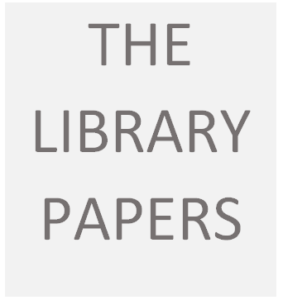The Teacher-Librarian
Being able to work with these tools in this environment is what it now means to be ‘literate.’ All of these new capabilities demand new ways of teaching, and new ways of thinking and talking about education.
Think of the Teacher-Librarian as a sounding board for ideas, and a human database of potential strategies and technologies. Librarians can offer suggestions around how to meet the instructional goals through:
- Research materials and techniques. See Information Literacy
- Multi-media literacy instruction. See Media Literacy
- Instructional strategies
- Assessment strategies
- Technological Tools. See Learning Technologies
- Collaboration Tools. See Network in Learning Technologies
Resources
Instructional Strategies
- BCTLA Points of Inquiry http://bctf.ca/bctla/pub/documents/Points%20of%20Inquiry/PointsofInquiry.pdf
- Inquiry based learning for elementary teachers (UBC) http://guides.library.ubc.ca/inquirybasedlearning
- Inquiry based learning for secondary teachers http://www.inquiryhub.org/
- ReadWriteThink http://www.readwritethink.org/search/index.html?page=1&sort_order=relevance&q=inquiry+based+learning&srchgo.x=0&srchgo.y=0&old_q=
- Wiggins, Grant and McTighe, Jay. Understanding by Design Backward Design: Pearson Education, 2005 pdf: Chapter: Why Backward is Best https://www.edutopia.org/pdfs/resources/wiggins-mctighe-backward-design-why-backward-is-best.pdf
- From the Tasmanian Department of Education, complete with planning templates for backward design: https://www.wku.edu/library/dlps/infolit/documents/designing_lesson_plans_using_backward_design.pdf
Assessment Strategies
BC Minsitry of Education
- New curriculum: http://www2.gov.bc.ca/gov/content/education-training/k-12/teach/curriculum
- New curriculum overview of assessment: https://curriculum.gov.bc.ca/assessment
- New curriculum performance standards: http://www2.gov.bc.ca/gov/content/education-training/k-12/teach/bc-performance-standards
- Links to assessment types: http://www.bced.gov.bc.ca/classroom_assessment/abouthand.htm
- Assessment overview: http://www2.gov.bc.ca/gov/content/education-training/k-12/teach/assessment
- Handbook on Student Self Assessment, 1994: http://www.bced.gov.bc.ca/classroom_assessment/self_assess.pdf
- Handbook on Student-Centred Conferences, 1994: http://www.bced.gov.bc.ca/classroom_assessment/student_centered.pdf
- Handbook on Portfolio Assessment, 1994: http://www.bced.gov.bc.ca/classroom_assessment/portfolio.pdf
- Handbook on Performance Assessment, 1994: http://www.bced.gov.bc.ca/classroom_assessment/performance.pdf
Western and Northern Canada Protocol for Collaboration in Education, 2006: http://www.wncp.ca/media/40539/rethink.pdf
BC Ministry of Education
Digital literacy
- BC Ministry of Education—Digital Literacy Framework categorizes and defines various skills and behaviors that make up digital literacy: http://gov.bc.ca/assets/gov/education/kindergarten-to-grade-12/teach/teaching-tools/digital-literacy-framework.pdf
- BC Ministry of Education—Digital Literacy profiles with examples of learning activities linked to core competencies by grade: http://www2.gov.bc.ca/gov/content/education-training/k-12/teach/teaching-tools/digital-literacy
Core Competencies
- An overview of the rationale for the competencies: https://curriculum.gov.bc.ca/competencies
- Links to each competency:
- Social responsibility: https://curriculum.gov.bc.ca/competencies/social-responsibility
- Critical thinking: https://curriculum.gov.bc.ca/competencies/critical_thinking
- Creative thinking: https://curriculum.gov.bc.ca/competencies/creative_thinking
- Communication: https://curriculum.gov.bc.ca/competencies/communication
- Personal awareness and responsibility: https://curriculum.gov.bc.ca/competencies/personal-awareness-responsibility
MediaSmarts
- Media Smarts http://mediasmarts.ca/sites/mediasmarts/files/publication-report/full/mapping-digital-literacy.pdf
- http://mediasmarts.ca/digital-media-literacy-fundamentals/digital-literacy-fundamentals
- http://mediasmarts.ca/game/how-cyber-savvy-are-you-cyber-security-quiz
- http://mediasmarts.ca/game/privacy-pirates-interactive-unit-online-privacy-ages-7-9
- http://mediasmarts.ca/game/myworld-digitial-literacy-tutorial-secondary-students
- http://mediasmarts.ca/game/top-secret-grades-6-8
The Role of the Librarian
- Loertscher, D. V. (2014). Makers, self-directed learners, and the library learning commons. Teacher Librarian, 41(5), 35-35,38,71.
- Canadian Library Association. (2014). Leading learning: Standards of practice for school library learning commons in Canada. Ottawa: ON (p.17) see Fostering Literacies to Empower Life-Long Learners Canter, L., Voytecki, K., Zambone, A., & Jones, J. (2011).
- (2014, May 1). Program diversity: Do libraries serve kid with disabilities. Retrieved from http://www.slj.com/2014/05/diversity/program-diversity-do-libraries-serve-kids-with-disabilities/
- Barack, L. (2014, May 1). LGBTQ & you. Retrieved from http://www.slj.com/2014/05/diversity/lgbtq-you-how-to-support-your-students
- Dambruoso, A. (2014, July 18). 10 things classroom teachers need to know about modern school librarians. [Blog post]. Retrieved fromhttp://libraryallegra.wordpress.com/2014/07/18/10-things-classroom-teachers-need-to-know-about-modern-school-librarians/
- Ray, Mark. (2016, June 7). Changing the conversation about librarians. Retrieved from: https://youtu.be/IniFUB7worY
Resources For Teachers
- Bezemer, Jeff and Gunther Kress. (2015). Multimodality, Learning and Communication. Routledge (2015).
- Gee, James Paul. Learning by Design: Good Video Games as Learning Machines http://www.academiccolab.org/resources/documents/Game%20Paper.pdf pp 12-13) (2004)
- Gopnik, A. The Gardener and the Carpenter: What the New Science of Child Development Tells Us About the Relationship Between Parents and Children(Farrar, Straus and Giroux, 2016)
- Gopnik, A., Meltzoff, A.N., & Kuhl, P.K. (2000). The scientist in the crib: What early learning tells us about the mind. New York: HarperCollins.
- Teach thought. (2014, August 17). 4 principles of student-centered learning. Retrieved from http://www.teachthought.com/learning/4-principles-student-centered-learning/



